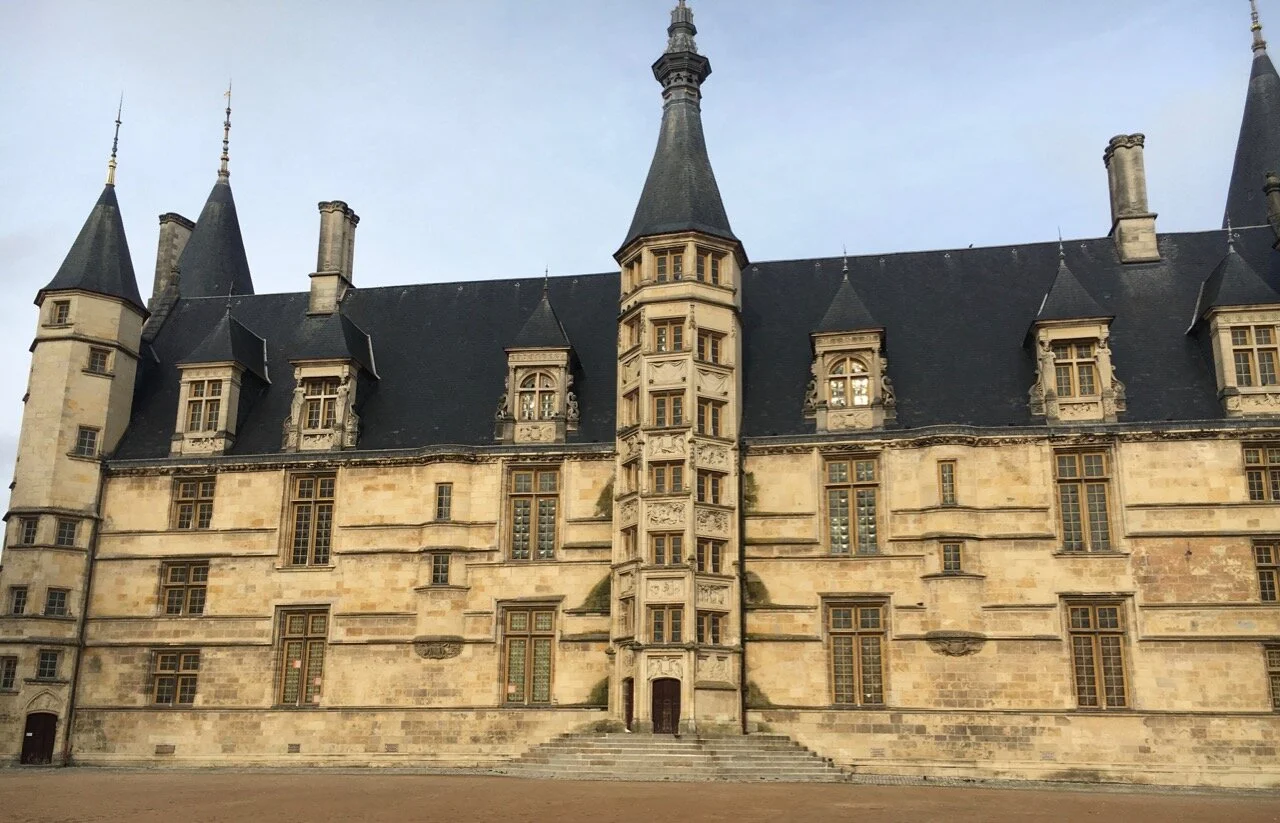Urban Alternatives in France
I was invited by the French architect Eric Arsenault to come to Nevers to discuss the ideas of Community Led Housing as a potential consideration to help address an intriguing and particular issue for their beautiful town. Eric as a member of the Architects Society A58, along with colleagues pulled together a dedicated event called the ‘Urban Alternatives’ conference, which included two other speakers from the UK, Paul Chapman and Sophie McManus. The event took place at the end of November in 2019.
Heading over on the train, I met up with the other two speakers before jumping on the Eurostar. Paul is a European projects and partnerships expert. He took part in a joint programme between the local authority and the community in the re-design of Cornmill Gardens, London, creating a bio-diverse, usable and well considered space. Sophie is an architect in a small London architectural practice, who came to talk about the role of the architect, and the challenges they face once out of architectural school, particularly in relation to creative design input into new developments.
With a quick journey through Paris from Gare du Nord to Gare De Bercy we caught the SNCF Intercités to Nevers, a beautiful town with a wealth of history built up on the Loire. Once a growing and prosperous town, it has suffered like many towns across the country, the gradual loss of its residents to the big lights, and the prosperity of the big cities. This was the rub of their particular and interesting issue. The town has had to accommodate a drop of 15,000 people over the last 50 years, which is significant considering that at its peak in 1975, it had a population of 45,000. So, how can a beautiful french town with numbers continuing to dwindle reinvent itself? The numbers are important as they enable enough taxes to cover the services and maintenance of infrastructure. With the growth of edge-of-town retail parks with their national supermarket chains and soulless car parks, puts an incredible pressure on the independent stores within the town. This is compounded with the drop in population numbers resulting in a vicious circle of boarded up shops, derelict cafes and restaurants, which further reduces the viability of these french towns.
The constant decline in population has left many areas to be left neglected.
So, is there scope for community led housing to help? Well, possibly, but it is only a small part of a big conversation. Interestingly the Mayor of Nevers attended, and set out his vision for the town, which included exploring routes to incentivise small businesses to take on empty shops, amongst other things. This trend seen by Nevers of struggling to keep numbers, is paralleled by many small towns across the country. Their competition is not with each other, but with the big cities, and of course with the big supermarkets and retail parks. The big supermarkets are seen as a lifeline providing low cost supplies to local residents, and considered to bring jobs to local people. In reality the short term benefits don't outweigh the impact of the gentle strangle hold these big supermarkets have, slowly suffocating the life out of the towns.
One of many shops around the town, which has been left abandoned.
It was interesting to discuss the growth of community led housing (CLH) in the UK, and the benefits to wellbeing, design and community ownership on housing delivery. In the UK, community led housing is often seen as an alternative route to 'affordable' housing. However, in Nevers, there is an abundance of empty homes (though not all are available), so community led housing as a solution is not about 'affordable housing' need. So, could community led housing be a route to help bring the community together, to grow strength and local collective ownership? Could community led housing be a component part of a bigger picture which is about reinventing the town along the lines of resilience, empowerment and adaptation for climate change. A town starts to be attractive to those looking for a sustainable future when it starts to embrace key areas. When it starts adapting to a low energy existence, which has local food production based on permaculture principles, and which has community ownership of renewable energy systems, homes, venues and services.
The Ducal Palace of Nevers poses as one of Nevers great attractions.
While the value of property is currently low, it is a good time for the creation of a Nevers Community Land Trust. A community land trust owned by the community, could start to take on ownership of the empty buildings. This would enable the homes to be brought back to life, providing low cost accommodation now and into the future. With the expected migration of people from coastal areas due to climate change, there is no reason why Nevers won't pick up again in the future. The benefits of community owned homes across the world are often seen when the value of properties in those areas go up. In Cabbage Town, a very expensive part of Toronto (Canada) to live now, benefits from a number of cooperatives that set up in the 1970s and acquired homes when it was a cheap area to live. They are now able to provide affordable accommodation. The benefits of setting up a cooperative were seen in the 70s, but are still playing out 50 years later.
So, all routes to strengthen the local community, and to support the local economy should help to support the town. It's whether there a long term vision can be taken, and the political will to support such initiatives. It's certainly a beautiful place, so worth dropping in if you are passing by.



